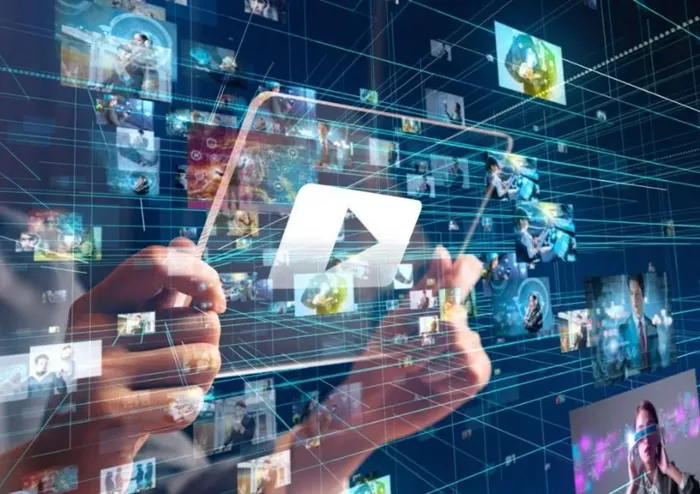The integration of artificial intelligence (AI), augmented reality (AR), and virtual reality (VR) has transcended from futuristic buzzwords to indispensable components of contemporary marketing strategies. In 2023, approximately 40% of Indian marketers leveraged AI for automated campaigns, with the market projected to reach USD 6.26 billion by 2024, according to Statista.
As brands race to harness these advanced technologies, a new era of consumer engagement has emerged – one centered around personalization and immersive brand experiences. Yet, amidst the excitement, questions linger: Are these technological advancements delivering on their promises, or are they merely elaborate digital facades?
Personalization – Up Close
“The advent of digital and AI-driven solutions, coupled with a shift towards consumer engagement over traditional push communications, is truly transformative,” asserts Ishwindar Singh, GM Marketing at Pernod Ricard.
Singh highlights Pernod Ricard’s recent ICC World Cup campaign for Royal Stag as a prime example of AI integration. “We empowered consumers to intimately connect with cricket stars like Rohit Sharma, Jasprit Bumrah, and Surya Kumar Yadav through hyper-personalized experiences,” he explains.
Ketan Bhatia, Group Brand Director at Good Glamm Group, underscores the power of data in modern marketing. “Data amalgamation of demographics, geography, and purchase behaviors enables highly tailored marketing messages,” Bhatia elaborates.
Similarly, Cadbury’s ‘NotJustACadburyAd’ initiative, featuring Shah Rukh Khan, allowed users to create personalized ads for local stores using AI. Earlier, Cadbury utilized AI to craft customized video ads starring Hrithik Roshan for Raksha Bandhan, fostering personalized connections through tailored greetings and messages.
The potential of AI in content creation is particularly transformative for marketers. Bhatia envisions a future where “virtually everyone can receive a personalized message,” a feat previously hindered by the sheer volume of creative output required.
Challenges
However, as brands eagerly adopt these technologies, concerns about digital fatigue and oversaturation loom large. Are consumers genuinely receptive to this level of personalization, or does it verge on intrusive digital tracking? Moreover, the reliance on AI and machine learning algorithms prompts scrutiny over the authenticity of brand communications.
Madhur Acharya, CBO of Aqualens and Vice President of Ecommerce at Lenskart, emphasizes the need for a human touch alongside technological prowess. “AI is a promising start, but genuine personalization demands human intervention for enhanced synergy,” Acharya cautions.
Lenskart, an early adopter of AR technology, utilizes 3D AI in its app to allow customers to virtually try on glasses, driving significant engagement with over 20 million app downloads. The ‘Nazar Ghati, Durghatna Ghati’ campaign leveraged AR to illustrate the impact of poor vision, tripling AR usage and underscoring AI’s efficacy in engaging consumers.
Acharya reflects on the integration of AR and VR in marketing strategies, stating, “We have integrated these technologies for a while now, continuously refining and enhancing their impact.”
While these innovations offer unprecedented opportunities, they also pose challenges. Balancing CGI enhancements while preserving authenticity is critical as digitally enriched campaigns risk alienating audiences with experiences perceived as artificial or disconnected from reality.
For instance, MG (Morris Garages) India’s ‘Drive The Legend’ campaign featured a digital film celebrating the brand’s centennial, integrating CGI to bridge historical legacy with contemporary allure for both existing and new consumers.
Moreover, the rapid pace of technological evolution may foster ‘shiny object syndrome,’ wherein companies pursue the latest innovations without fully integrating them into cohesive strategies. Acharya remarks, “There’s a long journey ahead. We often become overly reliant on new technologies, potentially stalling progress rather than harnessing their full potential.”
Another concern is the potential digital divide in marketing effectiveness, with smaller enterprises lacking access to extensive data sets or sophisticated AI tools at a significant disadvantage.
Inspired Future
In this transformative phase of modern marketing in India, possibilities abound where advanced technologies are as exhilarating as they are daunting. Singh envisions a future defined by robust consumer engagement, asserting, “We’ve unlocked a new era of consumer interaction, poised to define the future.”
Reflecting on global benchmarks like Nike’s ‘Dream Crazier’ and Apple’s succinct iPhone campaigns, Singh concludes, “The finest campaigns today echo global standards.”
The challenge for marketers lies in embracing innovation with both enthusiasm and prudence, leveraging technology not as an end but as a means to create personalized and immersive consumer experiences.
Related topics:
- GAIO: The Next Generation Of SEO
- Why You Need Social Media Marketing: A Comprehensive Guide
- OMG India Achieves Meta’s Marketing Science Company Certification

